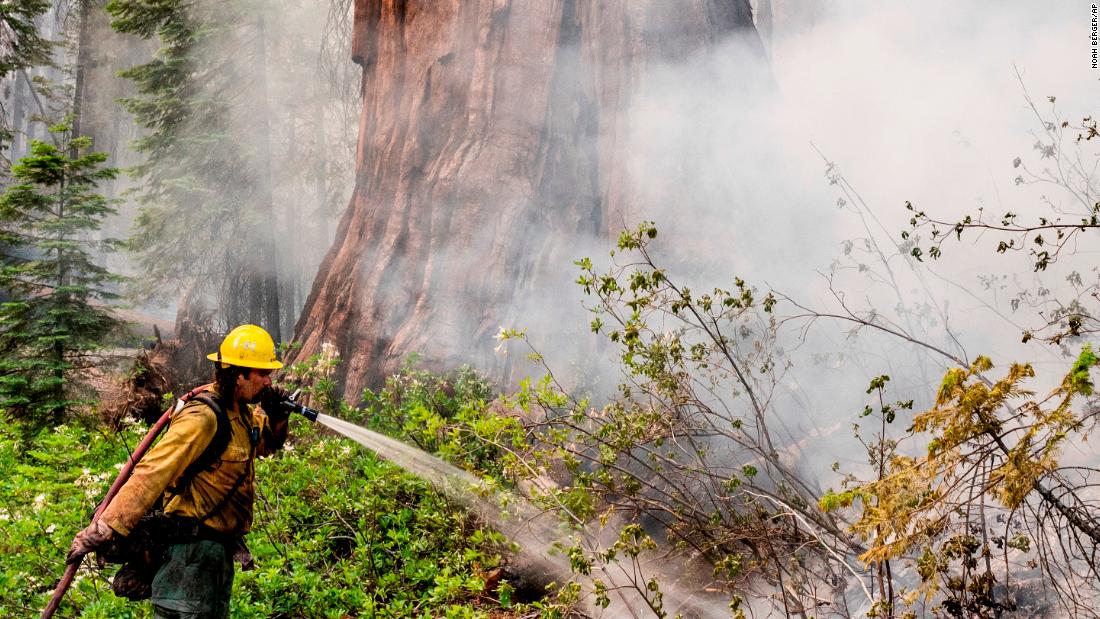The 2,044-acre Washburn Fire doubled in size over the weekend, encroaching upon Yosemite’s Mariposa Grove, home to more than 500 giant sequoias.
“The fire has entered the grove,” response spokesperson Robbie Johnson told CNN Sunday evening. “But the good news is because of prescribed burns and clearing out material on the ground, it’s clear in the Mariposa Grove.”
Fire management teams deployed protective measures from both the ground and air over the weekend, including installing a sprinkler system to dampen the ground around the park’s 209-foot Grizzly Giant sequoia.
Fire crews also removed dead trees, logs and undergrowth near the sequoias and carried out a prescribed burn to clear a protective “doughnut hole” around the area, Johnson said.
The cabin belonged to the first “guardian” of Yosemite, who convinced lawmakers to include Mariposa Grove as a protected area, according to the National Park Service. The grove in the Yosemite Valley was first set aside for public use by President Abraham Lincoln in 1864, eventually becoming a national park in 1890, park service records show.
Part of the blaze has been successfully contained at its origin point near Mariposa Grove, but the fire has continued to stretch northeast, officials say.
Hot and dry conditions will continue through the rest of the week, and the fire is expected to continue actively spreading, though its intensity may be reduced from scars left by previous fires, according to InciWeb.
“Now that the south entrance — one of the busiest entrances — is closed, that means the other entrances are extremely busy. So we have long lines of vehicles waiting to get in. So we ask people to be patient,” he told CNN on Sunday.
Gediman also warned visitors of potentially unhealthy air quality in some areas of the park, including Yosemite Valley, due to the smoke.
“We’re asking people to just be responsible and if someone has, for example, respiratory issues, to be very careful in hiking and choosing their activities,” he said.
Intense fires threaten historic forests
While fire is a natural part of Yosemite’s ecosystem, severe burns like the Washburn Fire threaten the forest, according to Gediman.
Last week, officials in southern California announced the region is bracing for a particularly challenging summer and fall of wildfires, as a prolonged drought has left vegetation brittle and dry.
CNN’s Taylor Romine, Paul Vercammen, Hannah Sarisohn, Chuck Johnston, Michelle Watson and Rachel Ramirez contributed to this report.
